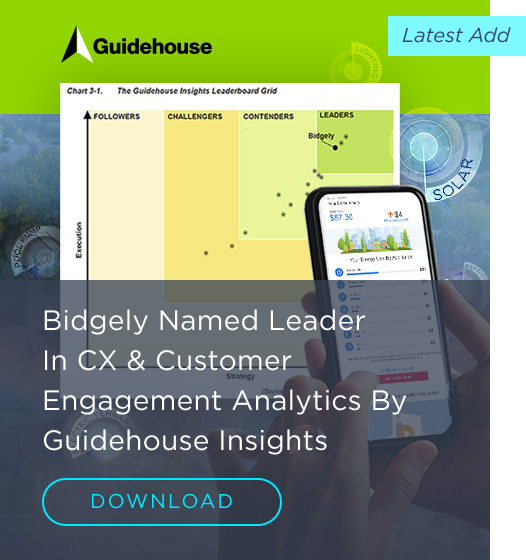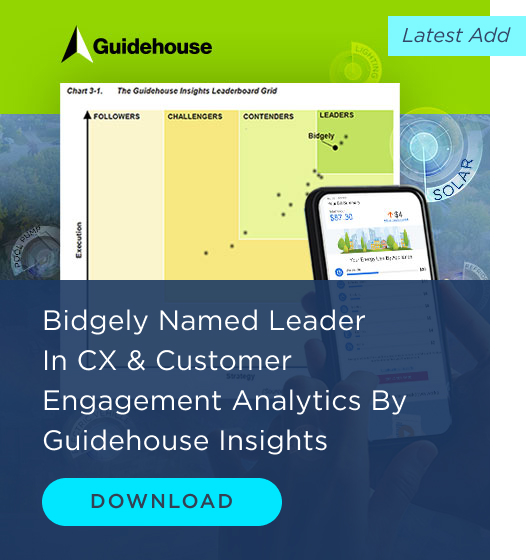It’s time to deliver on the promise of AMI + AI.
Planning and managing the grid requires energy utilities to make multi-billion dollar decisions routinely—making reliable insights about energy use across the grid invaluable.
Bidgely’s DER Grid Planning solution gives utilities behind-the-meter, appliance-level visibility for every household on their grids, across all 8,760 hours of the year.
With DER Grid Planning, utilities can:
Optimize grid upgrades with visibility into untapped load-shift opportunities
Analyze Non-Wires Alternative (NWA) with precision
Navigate DER adoption with confidence
Manage demand-side shocks effectively
Traditional Grid Planning Methods Are Inadequate For The Future
Customer-owned assets represent a big opportunity for NWAs and grid resilience but are often overlooked because they are invisible to grid operators and planners.
Traditional grid planning methods lack the detail, flexibility, and visibility required for a new dynamic, DER-saturated energy landscape—one in which utilities must balance decentralized, intermittent supply with evolving demand profiles from electrification, DERs, and extreme weather events.
Utilities need bottom-up grid analytics and modeling tools to uncover trends quickly and explore emerging energy scenarios reliably.
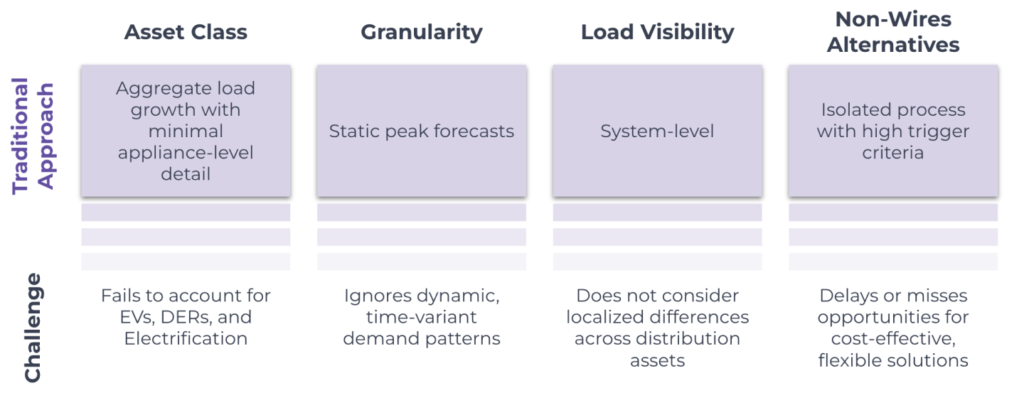
Bidgely Uncovers the Root Cause of Grid Constraints
Bidgely UtilityAI™ delivers detailed behind-the-meter intelligence about customers’ energy consumption patterns hour-by-hour, by 12 distinct appliance types (including EV and solar), across different geographic areas and rate plans.
Utilities can leverage this appliance-up visibility to manage the grid on a granular scale—home-by-home, asset-by-asset.
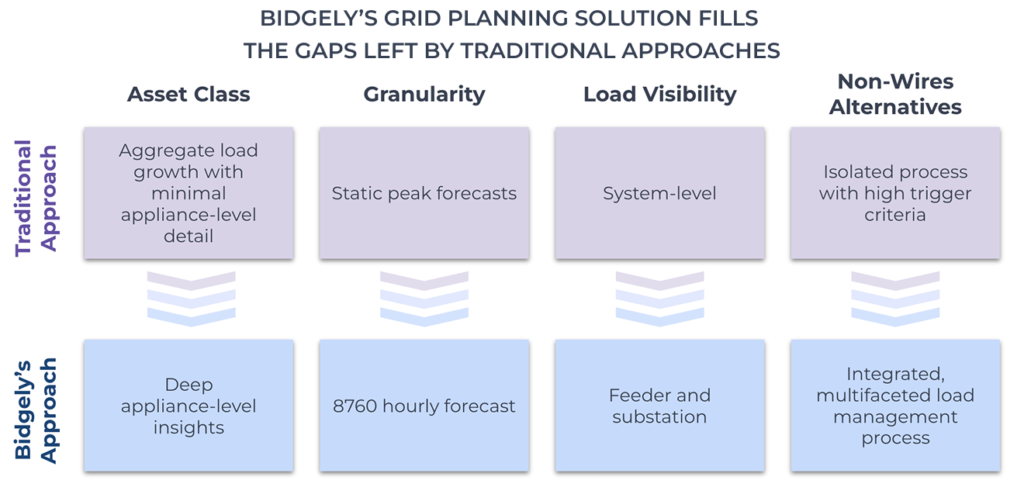
What's Holding Demand Management Back?
Load Shaping Program Limitations:
While many utilities are rolling out Time of Use (TOU) and Demand Response (DR) programs, these load-shaping tools lack precision demand control without personalized insights and guidance for each unique customer.
Poor Customer Sentiment:Whether a utility has mandatory or optional TOU rates, customers often find TOU programs and pricing complex, leading to low performance and increased frustration and support calls.
Lack of Personalized Engagement:Without personalized coaching on TOU rates, customers often don't get the necessary support in adapting their lifestyle to the new rate.
Low Demand Response Participation:Current demand response programs, including behavioral and controlled load shifting initiatives, often lack personalized customer engagement and optimal grid load adjustments, leading to poor customer participation and increased call center activity.
These insights translate into detailed understanding of load patterns across time, location and appliance category.
Bidgely DER Grid Planning, grid managers can see trends in EV and appliance ownership, understand the impacts of DERs on grid assets, and develop informed strategies to manage a modern, dynamic grid.
Bidgely’s Unique Approach Unlocks
the Root Cause of Grid Constraints
the Root Cause of Grid Constraints
Summer Peaking Utility with High EV Adoption
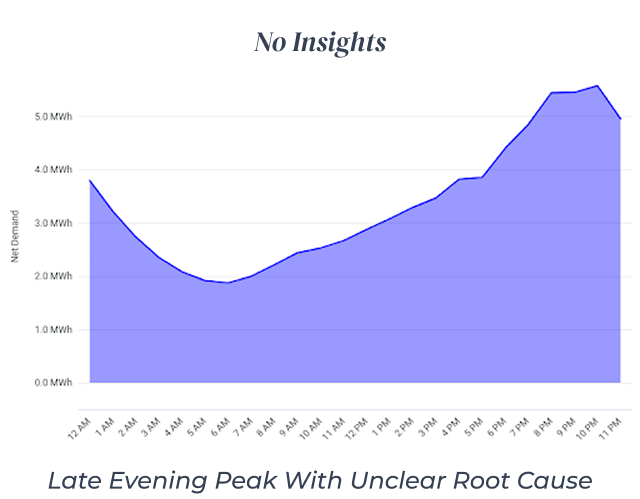
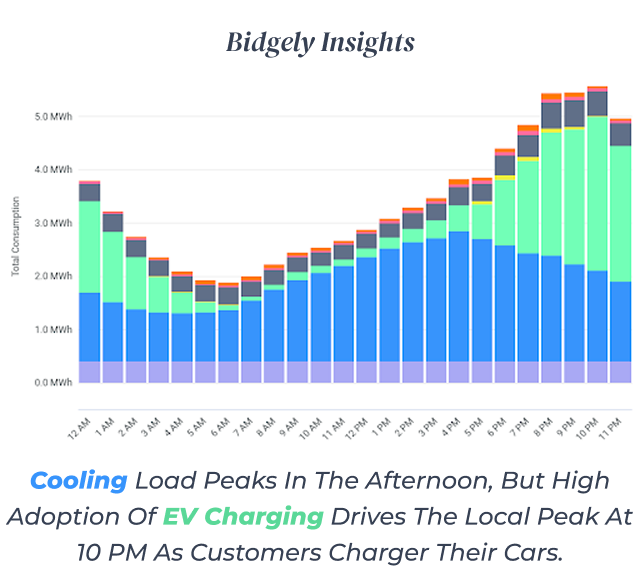
Summer Peaking Utility with High EV Adoption
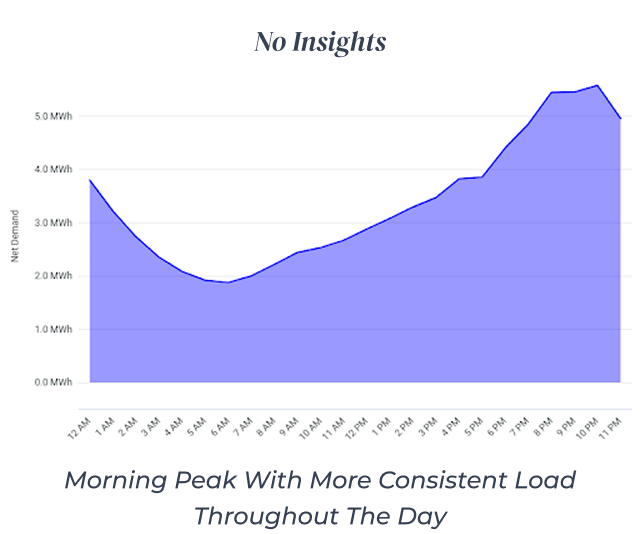

The Bidgely AI Advantage
Our difference comes from the industry’s most accurate load disaggregation
Bidgely’s DER Grid Planning Solution produces grid need assessments for various future scenarios and forecasts based on current DER penetration, enabling utilities to leverage DERs for flexibility through disaggregated Non-Wires Alternatives designs.
DER-enabled
grid planning
Right sized planning decisions
based on true penetration of DERs
Capture Non-Wires
Alternatives
Earn NWA investment, and demonstrate
results.
Agile decision
making
Reduce cycle time for planning process in order to make faster decisions
End to end big data and AI enabled software with bottoms-up asset visibility solution
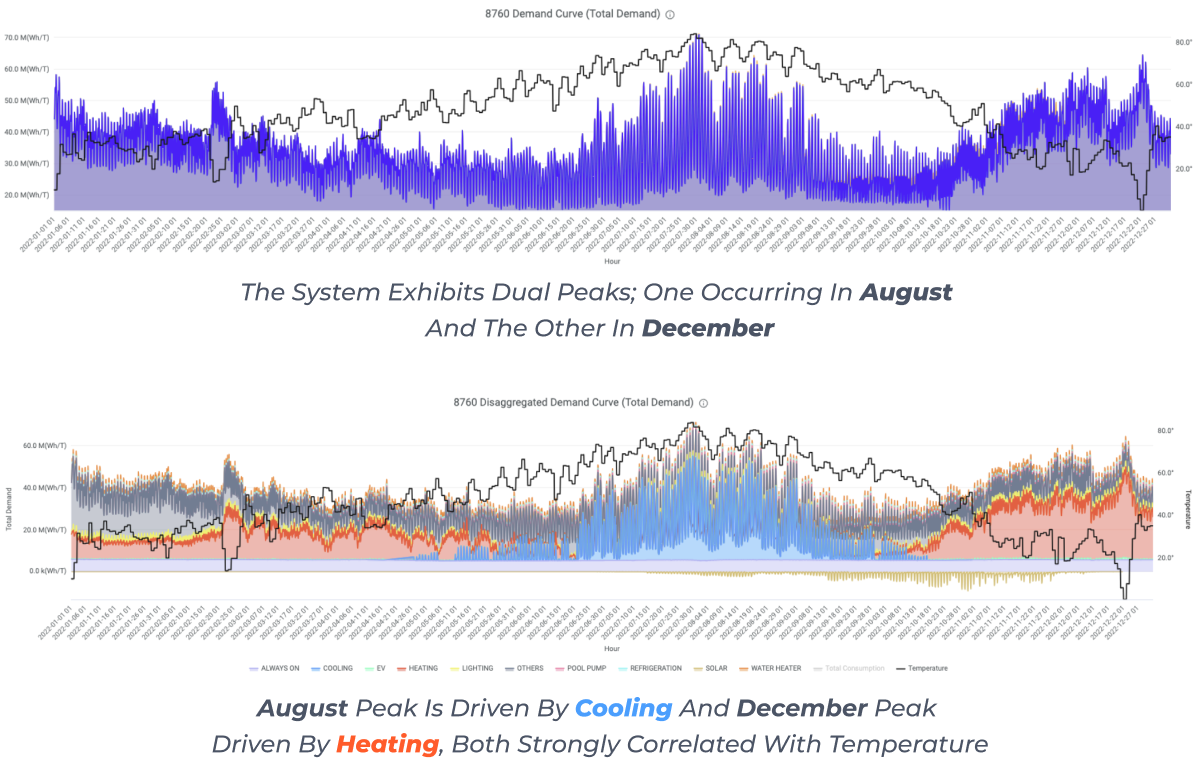
Explore Disaggregated 8760 Load Curves
Bottom-up time-based views of demand with disaggregated hourly appliance usage including DERs.
Capability to segment based on attributes including usage, customer profile, rate plan, geographic and demographic.
Identification of stressed assets with high utilization.
Identify Grid Asset Constraints and Their Underlying Sources
Evaluate the past and projected future capacity on transformers, feeders, and substations to identify constraints that exist today or that may exist in the future.
Aggregate analyses of each asset to highlight the peak demand and the number of times the asset was over capacity.
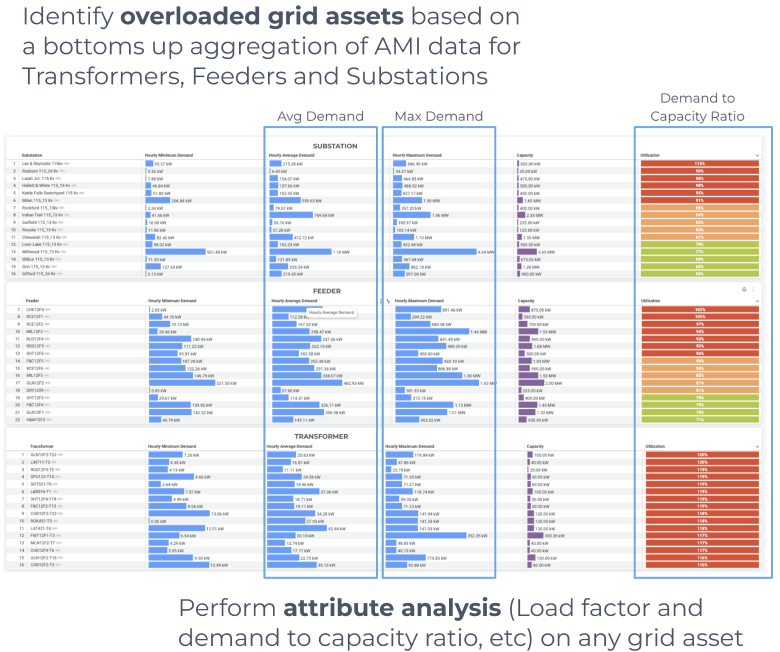
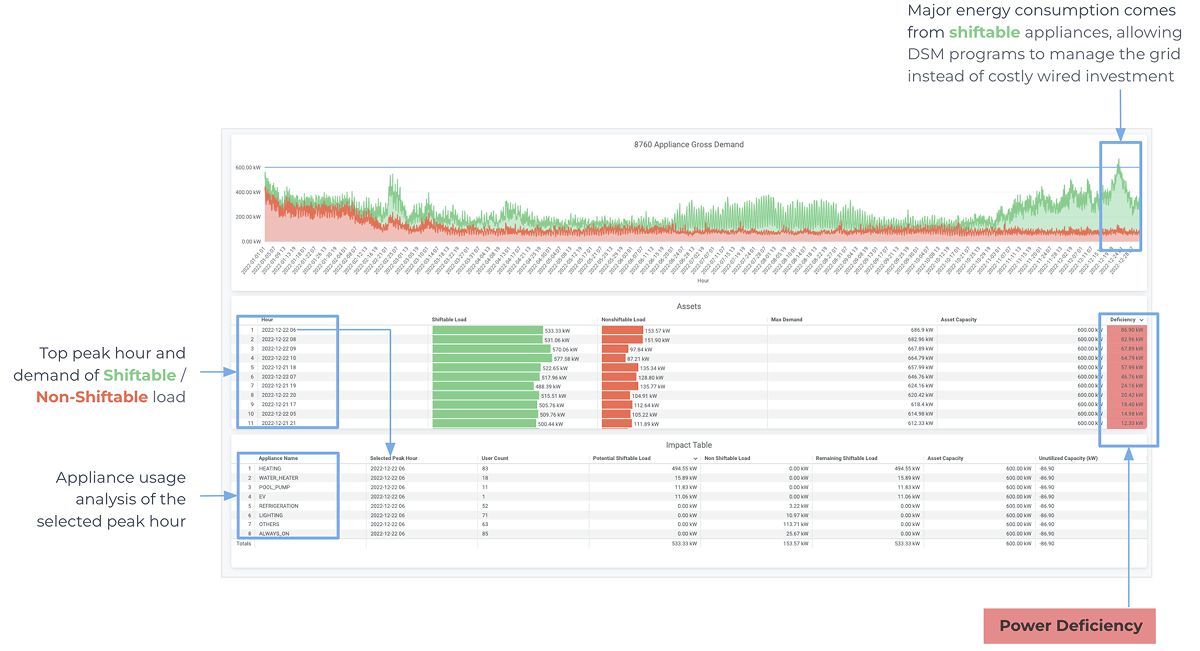
Evaluate Non Wires Alternatives by Shiftable and Non-Shiftable Loads
Evaluate NWA potential on each of the assets by overlaying reduction potential from Energy Efficiency programs, Demand Response (including EV), solar, battery, or any other load-modifying program.
Aggregate analyses into categories that demonstrate the relative potential of NWAs leveraging DERs.
Run various NWA scenarios to generate the modified load curve and assess the program’s impact on constrained grid resources.
Identify Future Constraints with
Scenario Planning
Enter granular DER and whole circuit load forecasting scenarios on the grid to assess best- and worst-case scenarios.
Peak demands can be triaged and planned for in-advance with known temperature dependence.
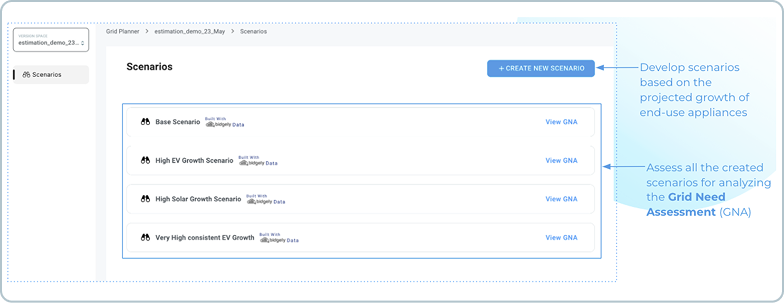
See the difference in our interactive demo portal
Let's start a conversation!
Take a smarter approach to delighting your customer and driving better energy efficiency outcomes.





